How to clean really dirty windows isn’t just about appearances. Dirty windows block natural light, make your place feel grimy, and can even cause glass degradation. We’ve seen it all — windows etched from mineral build up in rural VIC, salt spray damage up the coast and mould growing in humid corners of QLD homes. Letting grime build up is a one-way ticket to bigger maintenance bills down the line. And let’s not forget the impression it makes. Whether it’s your own home or a commercial site, dirty glass screams “I couldn’t be bothered” louder than a broken screen door.

First Things First: Assess the Mess
Before you grab the bucket with water, have a proper look. Is it dust, salt, mould or that mystery grime from last year’s storm season? Identify what you’re dealing with:
- Dust and pollen: Common in dry inland regions and springtime in VIC/NSW. Lots of dust can make your glass surfaces look rough as guts.
- Salt spray: A coastal classic — eats through seals if left too long.
- Hard water stains: Often from bore water or sprinkler overspray in rural and suburban areas. These cause water spots that trap more dirt.
- Mould or mildew: Loves shaded spots in humid zones like FNQ.
- Paint overspray or construction dust: Especially common on renos and new builds.
Knowing what you’re up against helps you choose the right cleaning solution without damaging your window pane or surrounding surfaces.
The Gear We Take on Every Job
- Squeegee and microfibre cloths: Your everyday tools. Squeegees for streak-free finishes, cloths for frames and details.
- Window mop or washer: For soaking and agitating. Scraper blade: Only for non-coated glass, and used with finesse.
- PH-neutral window detergent or dish soap: Nothing harsh, just a good performer.
- Pure water system or filtered water: Prevents mineral residue, especially important for high or exterior windows.
- Extension poles and telescopic window cleaning poles: Saves your back and keeps feet on the ground.
- Spray bottle: Great for mixing white vinegar or a natural solution.
- Soft brush or dry brush: For dry dust removal before applying soapy water.

Optional extras:
- White vinegar for water spots or natural cleaner mixes.
- Drops of dish soap with warm water or hot water for oily grime.
- Lemon juice and bicarb paste for eco-lovers.
- Soft cloths, clean cloths, and lint-free cloths for polishing.
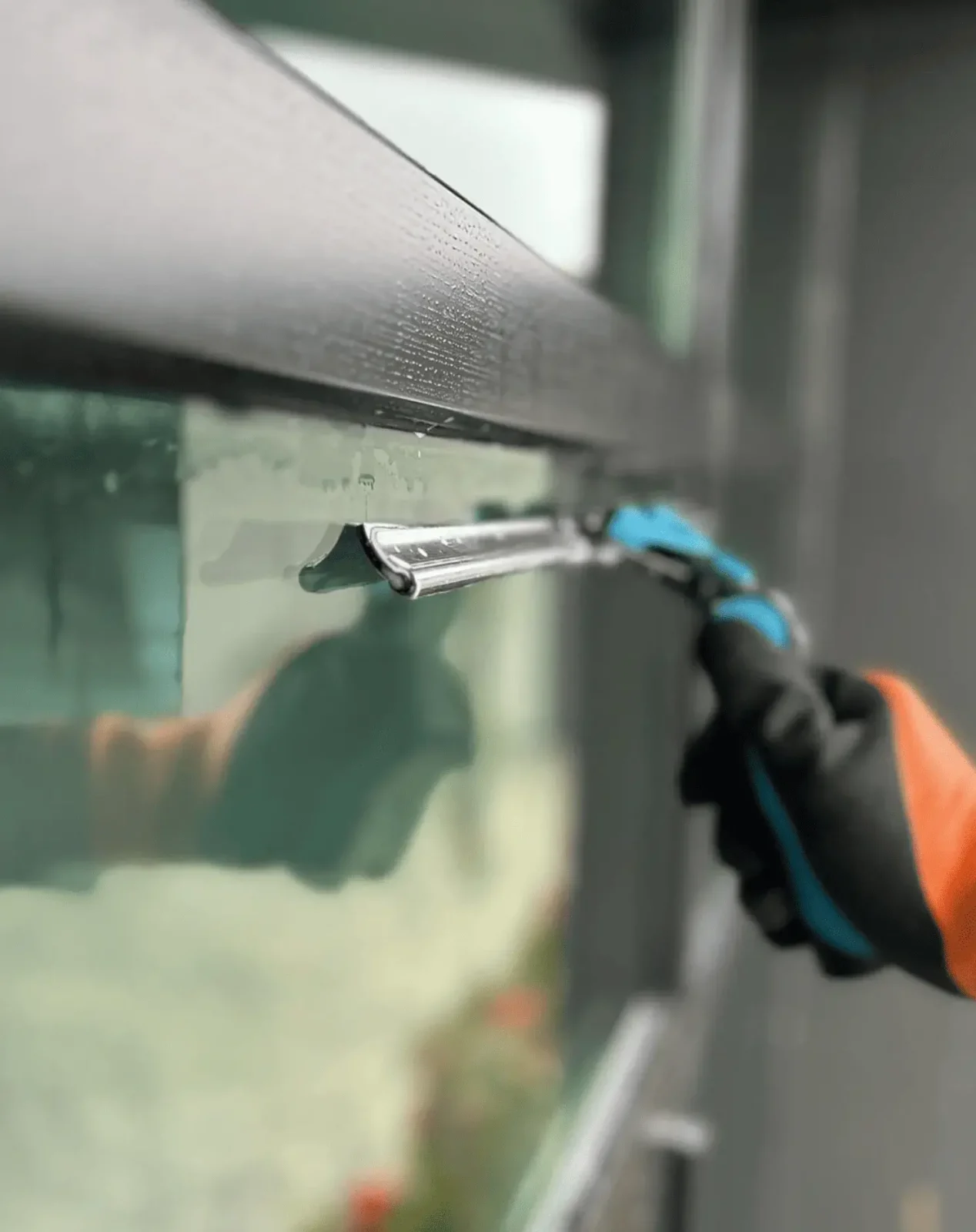
Our 5-Step Method for Cleaning
1.Dry Dust First
Use a dry microfibre cloth, soft brush or dust attachment to get rid of spider webs, coarse dirt and grit. Especially important around the window frame and crevices — no point turning that dirt into sludge.
2. Pre-Wash Rinse (if needed)
If your windows are caked with dirt or a bulk of dirt from storms or birds, hose them down with a garden hose and an adjustable hose nozzle. Not a pressure washer — save that for the driveway.
3. Apply Soapy Water with a Mop
4. Squeegee Technique & Touch-Up
Use smooth, overlapping strokes with your squeegee. After each stroke, wipe the blade with a clean damp cloth. Pay extra attention to corners and edges, where water tends to collect. Reapply soap solution only where needed.
5. Detail the Edges
Use a lint-free or absorbent microfibre cloth to polish the window edges, frame, and catch any drips. Clean the entire surface — especially dusty frames, as they can cause streaks on freshly cleaned glass.
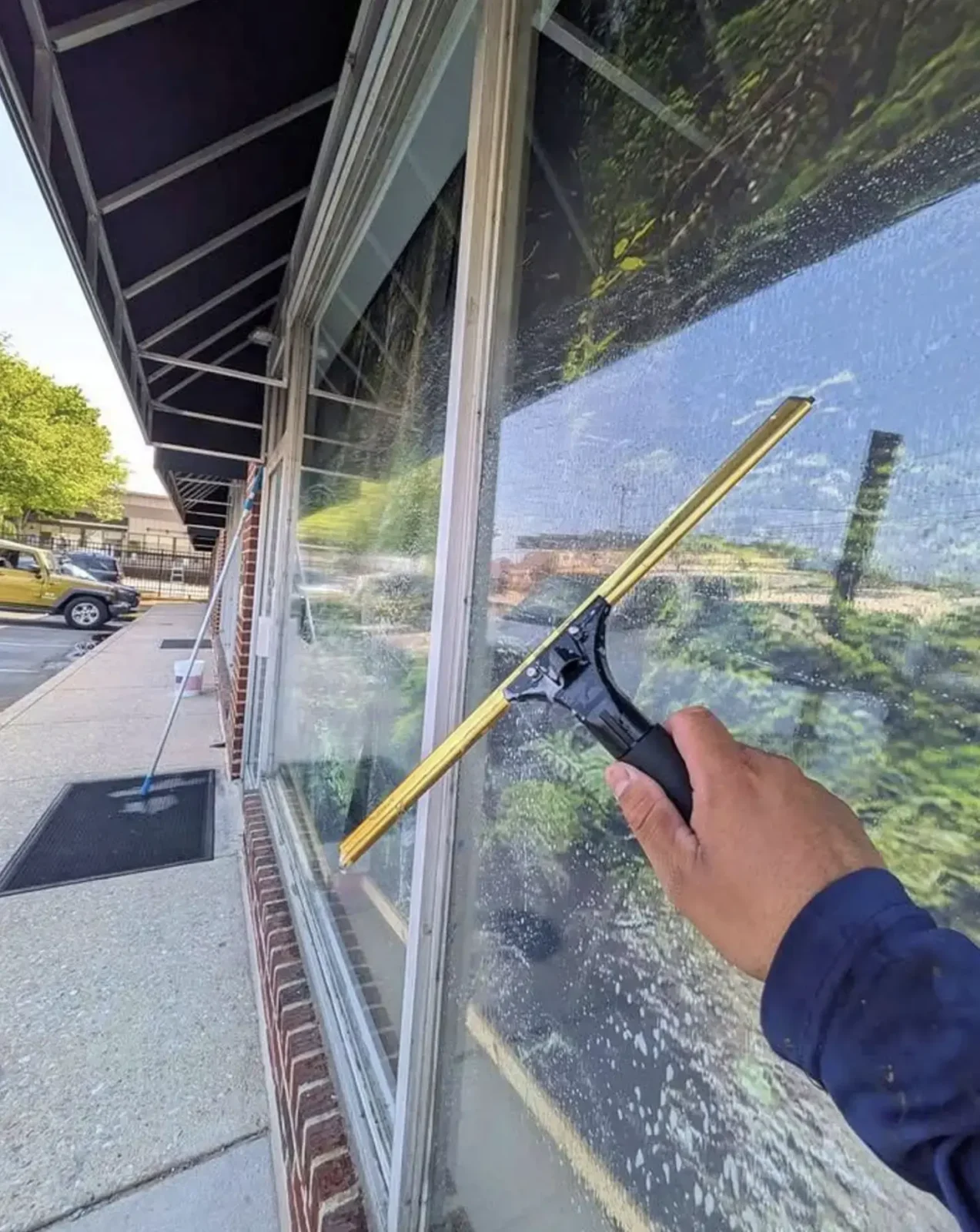
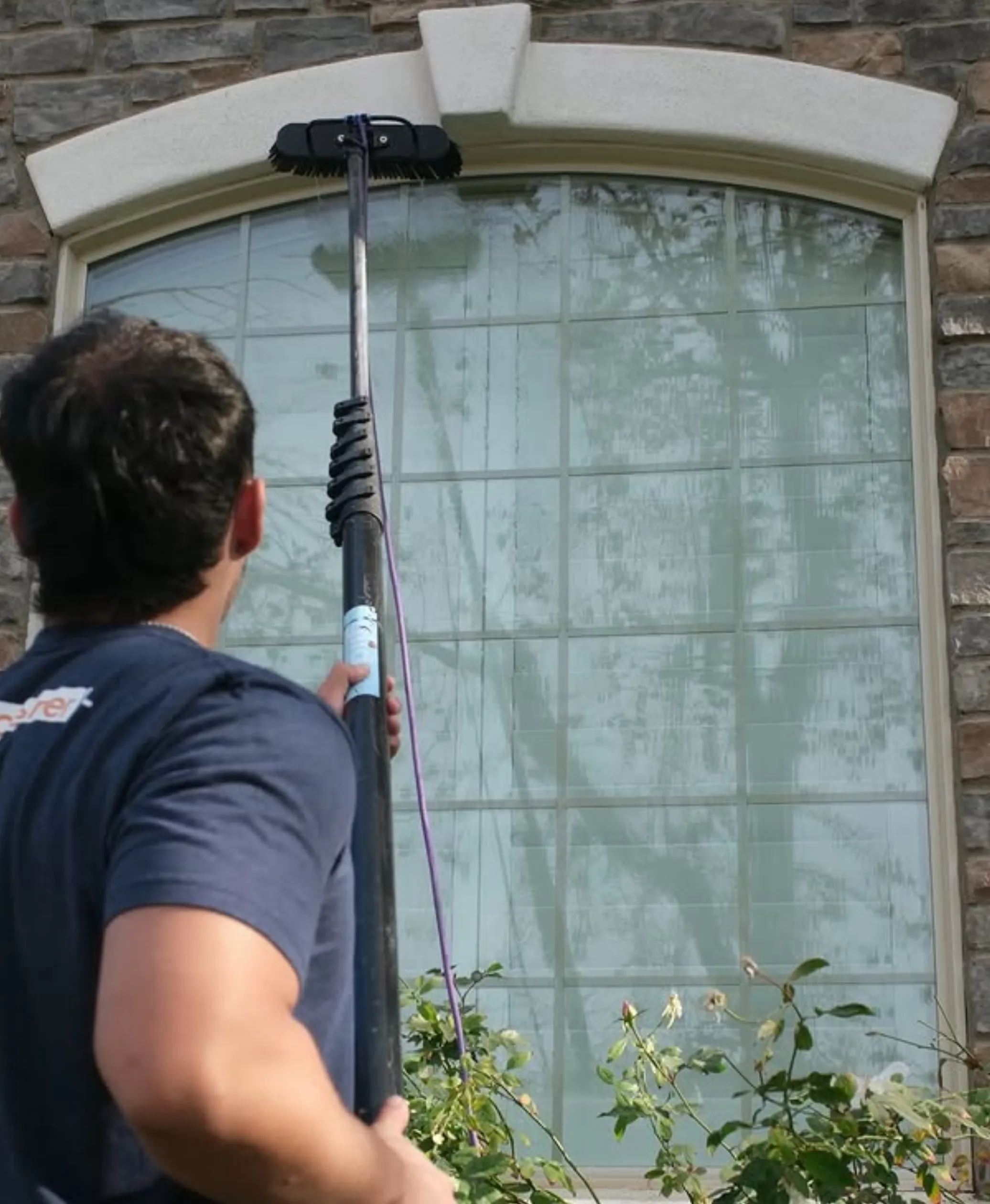
Foggy or Double-Glazed Windows?
If your glass windows are foggy or look cloudy between the panes, stop right there. That’s likely a broken seal in your double-glazing unit. You can clean window exteriors, but interior fog means replacement. It’s a big job, but not a cleaning one.
Surface fog from humidity or temperature changes? No worries. Use warm water and vinegar or a mild soap solution with a microfibre cloth for a streak-free shine.
Tricks for the Nasty Stuff
We’re talking about the kind of dirt that laughs at your usual window cleaning gear:
- Hard water stains: White vinegar and warm water. Apply with a clean cloth or soft cloth, leave for a bit, then scrub gently.
- Sticky tape or residue: Diluted eucalyptus oil or citrus-based window cleaner.
- Paint specks or construction dust: Razor blade over wet glass. Keep the blade angle shallow and squeegee afterwards.
- Mould: Vinegar solution, leave to sit, then scrub. For big jobs, call in the mould experts.
Extra tip? Avoid the dreaded streaks by cleaning early morning or late arvo — direct sun speeds up drying and leaves a difference with streaks.
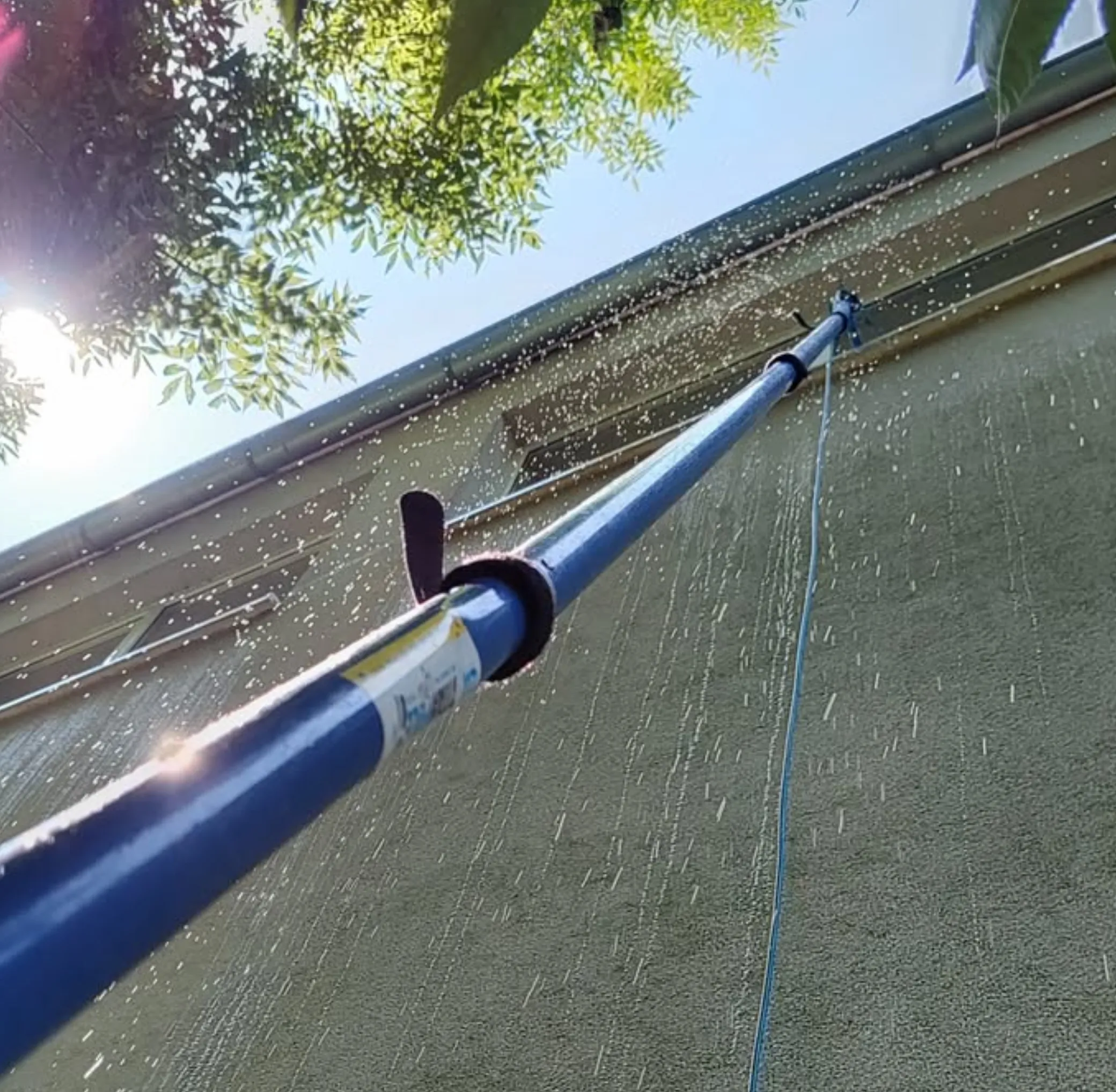

How Often Should You Clean?
We know — household chores like washing windows can feel like annual spring cleaning nonsense. But here’s our rough guide:
- Residential homes: Every couple of months.
- Coastal homes with salt or sand: Every 6-8 weeks.
- Commercial buildings: Monthly or quarterly depending on exposure.
- High-rise or tricky exterior windows: Stick to a regular cleaning cycle with professional window cleaners.
Dodgy Habits That Make It Worse
Time to ditch the dodgy methods:
- Scrunched up newspaper or fashioned newspaper — the ink and lack of absorbency are no good.
- Using dirty water or too much cleaning product — just leaves cleaner residue or detergent residue.
- Not using a squeegee — get the squeegee method down pat for a clean streak.
- Leaving dirt specks to sit for weeks — dirt build up becomes permanent marks.

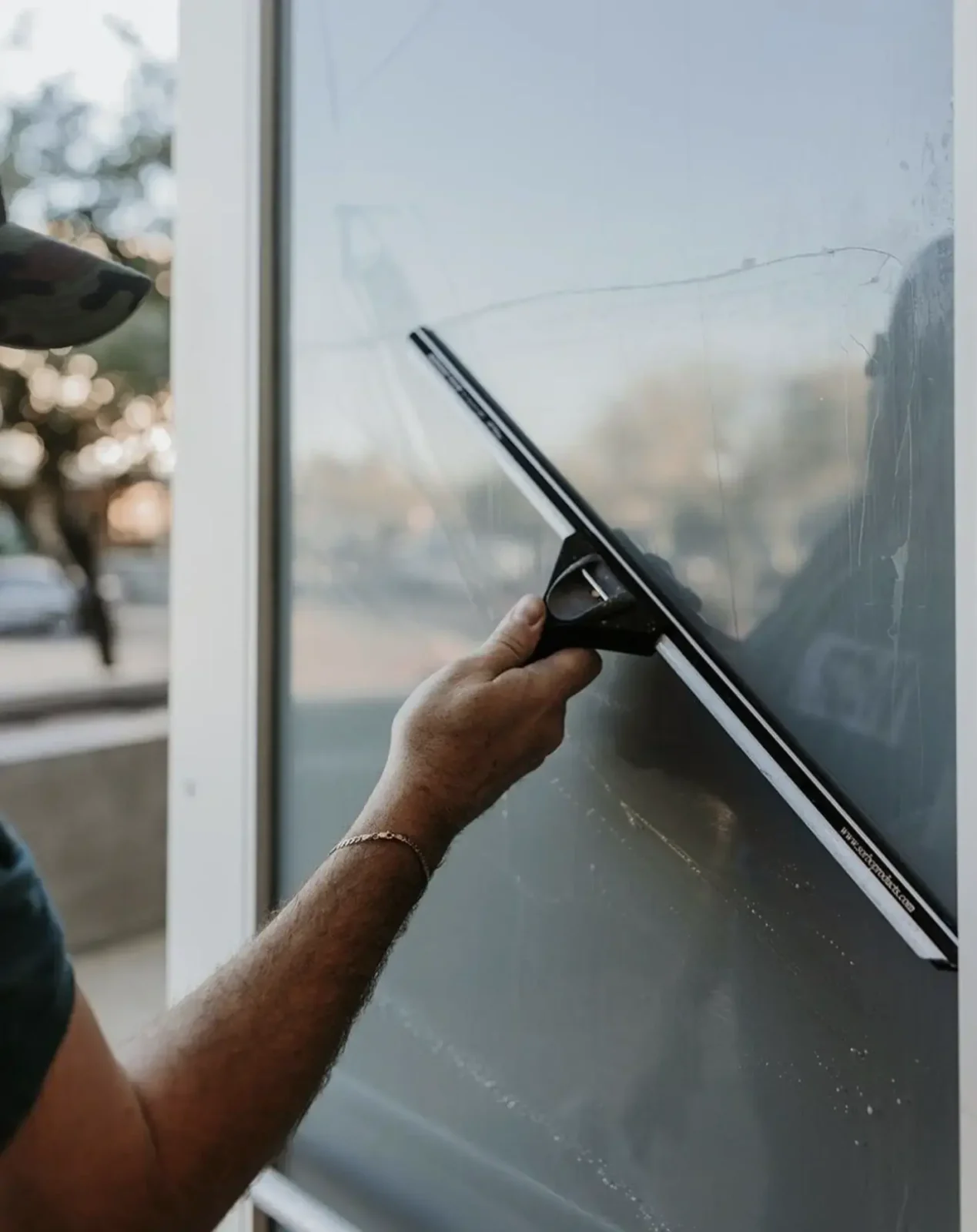
When to Call in the Pros
Time to skip the DIY or store-bought route if you have:
- Exterior windows on the second storeys or above
- Dirt on glass that won’t budge with natural cleaners
- Commercial building permit areas
- Post-reno cleanup with construction dust and debris
- Stubborn dirt or dirt stick issues from hard water or pollution
A pro brings cleaning power, the right cleaning techniques and commercial window cleaning products that are safe on various glass surfaces.
If you’re in the city and not sure where to start, the Window Cleaning Melbourne Crew has seen every type of grimy pane Melbourne weather can throw at glass.
FAQ
Can I use vinegar on my windows?
Yes — but only on uncoated glass. Vinegar can damage tinted or treated panes. Mix a couple of decilitres with warm water in a plastic spray bottle for best results.
Is cloudy glass the same as dirty glass?
Nope. Cloudy between panes = failed seal. Surface fog = humidity. One needs a replacement; the other needs a wipe with a clean microfibre cloth.
What’s the safest cleaner for tinted glass or films?
Use warm water with a few drops of grease-cutting dish liquid. Avoid anything with ammonia or alcohol.
Do professionals use expensive cleaning products?
Some do, but many rely on old school techniques, eco-friendly and plant-based glass cleaners and pure water systems. You don’t need expensive brand-name cleaning sprays to get streak-free results.
Can I use a pressure washer on windows?
Big no. You risk damage, voiding warranties and water leaks. Use a crevice cleaning attachment and a soft washing approach instead.
